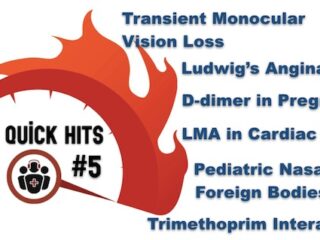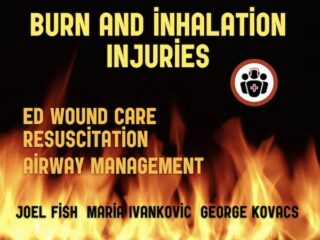EM Cases emergency medicine education podcast
Ep 126 EM Drugs That Work and Drugs That Don’t – Part 1: Analgesics
In this podcast we discuss the key concepts in assessing drug efficacy trials, and provide you with a bottom line recommendation for the use of gabapentinoids, NSAIDs and acetaminophen for low back pain and radicular symptoms, topical NSAIDs and cyclobenzaprine for sprains and strains, caffeine as an adjunct analgesic, why we should never prescribe tramadol, dexamethasone for pharyngitis, calcium channel blockers for hemorrhoids and anal fissures, buscopan for abdominal pain and renal colic and why morphine might be a better analgesic choice than hydromorphone...









